
The way we were
Before we discuss the Minolta X Series (X-700, X-500 and X-300 etc), let’s step back in time.
Back in the mid 1970s and early 1980s the 35mm SLR camera market was in turmoil. The big boys were busy forcing the smaller companies out and there was a rush of developments as each manufacturer tried to get the drop on the competition.
The smaller players just ran out of cash and gave up, some of them became cheap 3rd party suppliers for accessories, some became sub suppliers for the big boys and some, sadly, were relegated to a footnote in camera history.
Any avid reader of the photography magazines back then can doubtless remember a certain headiness as manufacturers seemed to be churning out an ever larger number of techno marvels. The smart phone market of the last few years would be similar for younger readers.
The drivers on the market were simple – get more 35mm SLRs sold – pronto! Get more sold, sell more cameras, get cameras sold NOW! The biggest headache to getting more 35mm SLRs sold for manufacturers was the average camera owner/user lacked the interest/brainpower/willpower to learn photography – they just wanted to take some happy snaps on hols. Getting a picture of little Timmy in the paddling pool or cousin Sarah’s big day was what they wanted, not learning abstract things like depth of field or film reciprocity. Getting the volumes up would mean (a) getting the camera to do some of the ‘thinking’ and (b) getting the price down to make it appealing enough for people to consider dumping their trusty Kodak Instamatic.
Between 1974 and 1981 there would be a rush of developments culminating in 1985 with the first practical and commercially successful auto-focus system in a 35mm SLR – the Minolta X-7000 Dynax. In the stampede towards this there was a plethora of developments from the big 5 manufacturers as they duked it out to be last man standing. The holy grail back then was ‘Program’ mode. Getting the camera to do the tricky bit of setting the shutter speed and aperture.
From the mind of Minolta
Minolta as ever were very much up the front in terms developments. Minolta had a history of being first in the pool. Their beautiful XE model was killed by the Olympus OM-1 which forced the entire industry to go for small form factors.
Minolta hit back (hard!) with the very beautiful XD7 which got the size down to OM-1 proportions and provided the first camera with AP, SP, Program and Manual modes. A masterpiece of design, but sadly the XD was too expensive and too sophisticated for most people. “Most people” included Minolta themselves who never mentioned the Program mode until the second revision! The XD was so sophisticated it seems even Minolta didn’t get it!
By the late 1970s Minoltas product range was eclectic – the venerable but now outdated SRTs (in three different flavours) , the all new budget end XG series brimming with plastic and techno and the swish and sophisticated XD priced so high people fainted or cried in the shop (it was about equivalent to about 2 months take home pay for the average Joe or Joanna!)
Minolta had a complete line up but, each of these cameras was entirely different in terms of production and their technology. What was needed was some rationalisation and some serious price snipping and Minolta clearly had a plan in mind – the goal would be a simplified line of cameras all using the same base but with differing levels of features. This would become the X-x00 Series (Minolta X Series).
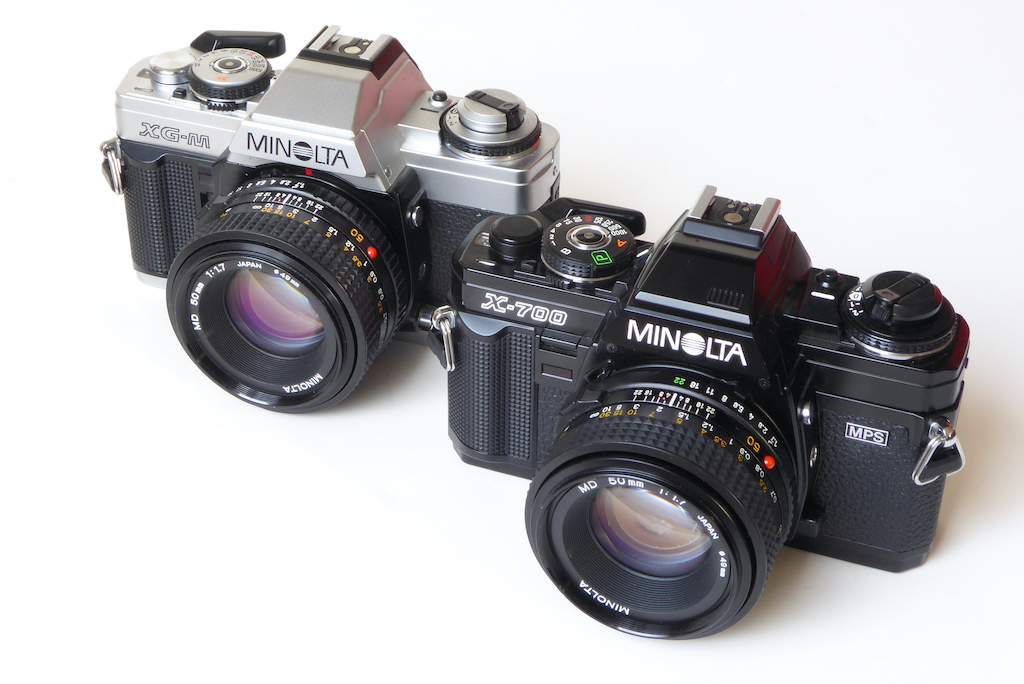
The humble XGs would provide the stepping stone to the X-x00 series and pioneered most of the manufacturing processes and construction techniques which would follow Canons approach with their AE-1. This basically meant all electronic control and plastic bodies! In 1981 Minolta launched the XG-M – the final iteration of the XG series and the last stepping stone towards the Minolta X Series. The SRT range was killed off and Minolta had their goal of a simplified line up in their reach.
The X-x00 Series were among the last manual focus 35mm SLRs but were built so well that they would trudge on for over 20 years becoming arguably the last man standing in the manual focus SLR market.
The Minolta X-700 – ‘X’ The Unknown Factor
Minolta had gotten it wrong for all the right reasons with their splendid XD series which supported Aperture Priority (AP), Shutter Priority (SP) and Program mode plus full manual and all packed into a body scarcely larger than the diminutive Olympus OM-1 and the XD is indeed a splendid beast. One of the finest manual focus camera made but the problem was price. It was expensive – granted you were getting a high quality camera but the market was moving away from ‘the best’ to getting something in the shops that would be ‘good enough’ at a sharp price point. This would get some more kit sold and also save on Kleenex and smelling salts for Joe and Joanna when buying a camera.
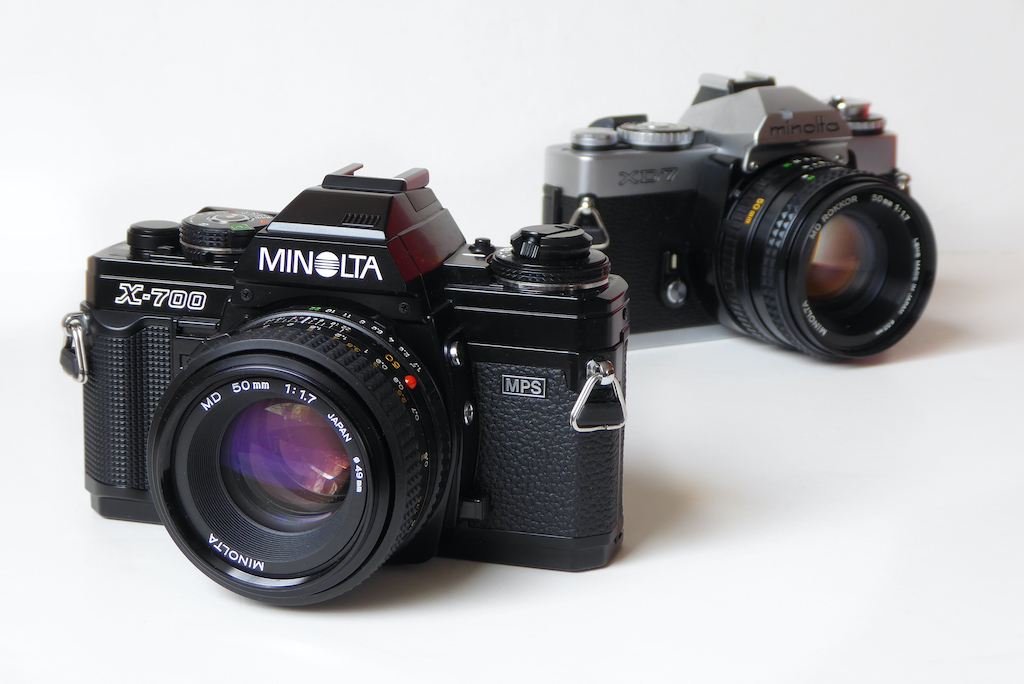
Enter the X-700 – Minoltas best ever selling camera. The X-700 may have been a bit slow getting here but when it did it had a lot of features in the bag….leveraged off of the chassis of the XG-M the X-700 would look very similar but under the hood it had been hotted up with a bag of goodies.
- Stepless electronic shutter for AP and Program mode plus manual speeds from 4 seconds to 1000th plus B.
- Final check metering system just like the XD.
- One of the best focus screens of any camera – better even than the XDs screen which was itself amazing.
- Exposure lock function.
- LED metering showing recommended speed (or camera selected speed if in Program or SP mode) but not actual speed set if in manual mode.
- Aperture readout in the viewfinder.
- Exposure compensation of up to 2 stops.
- Film Safe Indicator which shows if film is transporting ok.
- Touch sensitive on/off for the meter – putting your finger on the shutter release activates the meter. After 15 seconds of no activity the meter turns itself back off.
- Full TTL flash operation- the first camera ever to have this!
- Replaceable/Swappable focus screens – although this was touted as a feature and was possible Minolta never did push the optional screens which included a grid screen and a microprism centre dot. They are now VERY rare.
- Motor drive compatible – Minolta did have a penchant for wrecking sales of their cameras by NOT having a motor drive capability – the X-700 finally got it right with a fully featured motor drive accessory.
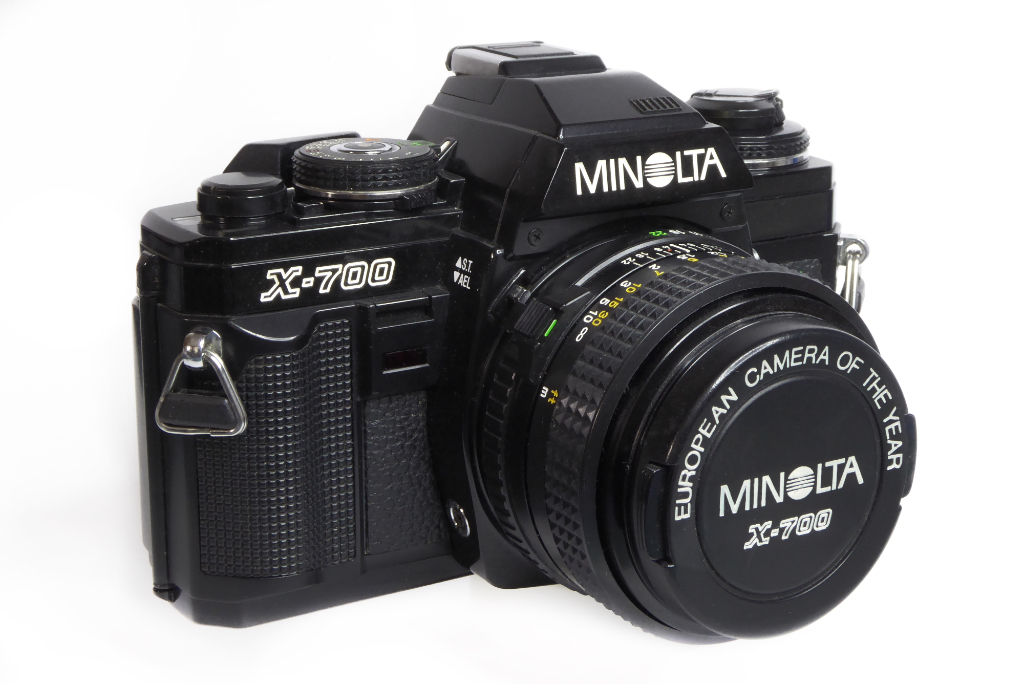
All these features made the camera attractive to the complete newbie and the advanced amateur and the Program mode made it possible for even complete beginners to get some decent shots. While Minolta pitched the X-700 as a professional camera, and manufactured a whole bag of accessories for it the camera was never really successful as a professional bit of kit and it was stuck firmly at the prosumer end of the market where it cut quite a dash.
The X-700 was so successful that it was awarded European Camera of the Year in 1981 and Minolta carried on bashing them out from 1981 to 1999, first in Japan, then in Malaysia and finally in China making it one of the last manual focus cameras in production – only its less expensive cousin the X-300 had a longer production run.
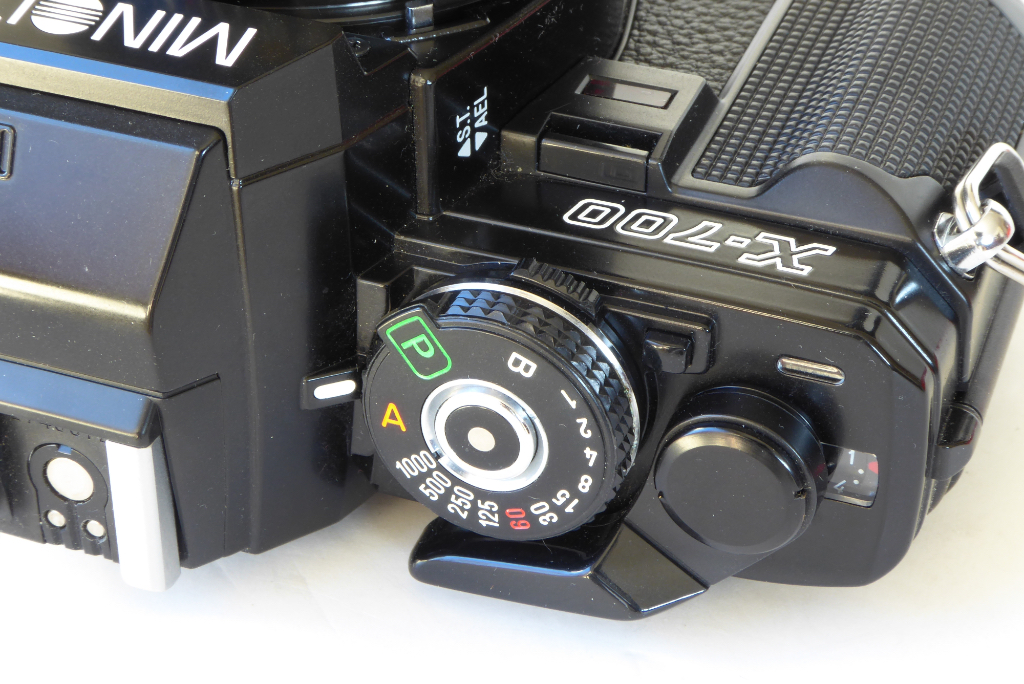
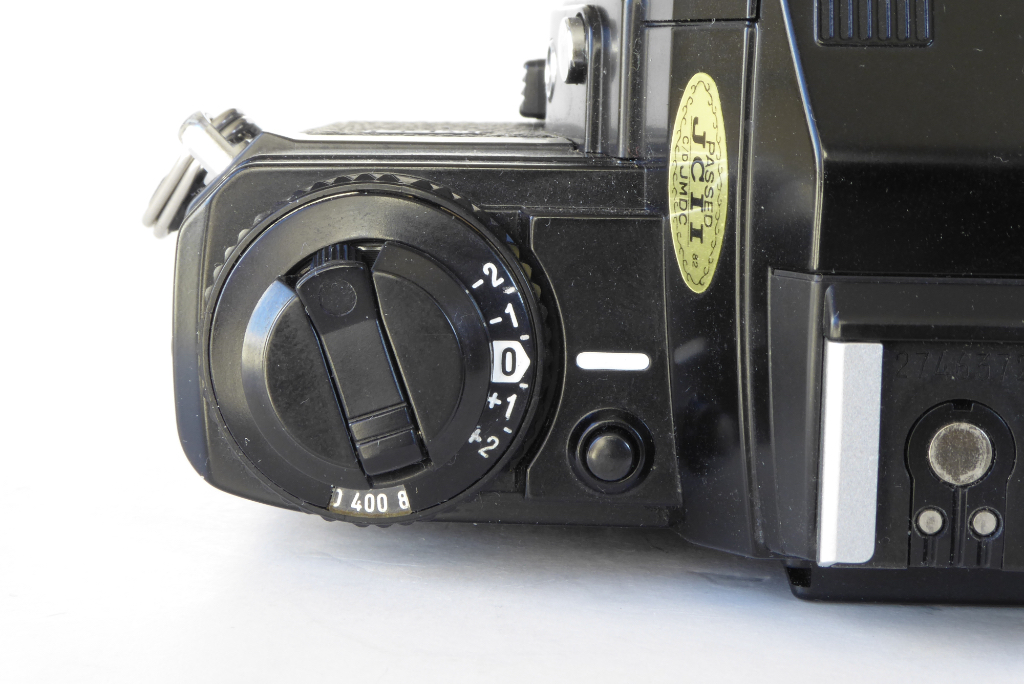

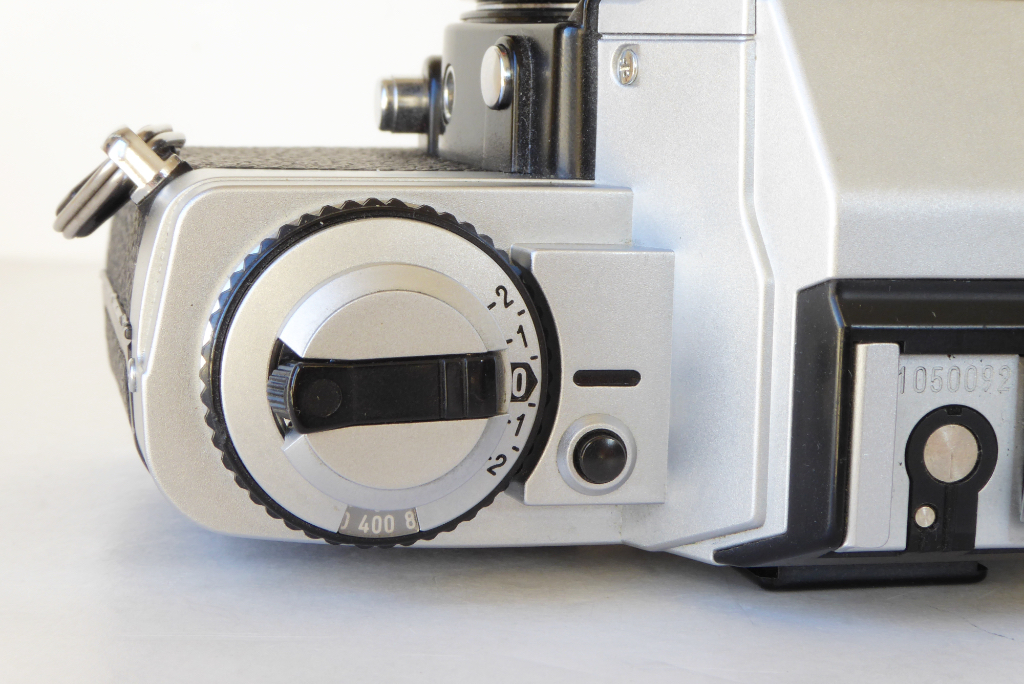
Now to get all the features in to the right price point Minolta had to make some compromises so you get a plastic body, horizontal cloth shutter as opposed to the Seiko metal bladed vertical shutter in the XD, lots of internal components made of plastic and the finesse of the XD is lacking BUT…. It’s still miles nicer to shoot with over many cameras of the period – perhaps even most. The body may be plastic but its quite tough and durable and it fits in the hands well with all of the controls well positioned.
The film advance is a bit more firm than the svelte XD and all of the controls have a more plastic feel lacking the poise of the XD’s excellent damping in its controls but it works, and works well.
As an aside here….for all the XDs superiority Minolta sold fewer XDs in the entire production run of XDs than they sold X-700s in the first two years of X-700 production.
Minolta most likely saw the X-700 as a place holder in the manual focus marketplace while they sneakily got on with producing the apocalyptic 7000 series which would very firmly push a cream pie into almost every other manufacturers face but time has shown what an excellent design the X-700 actually was.
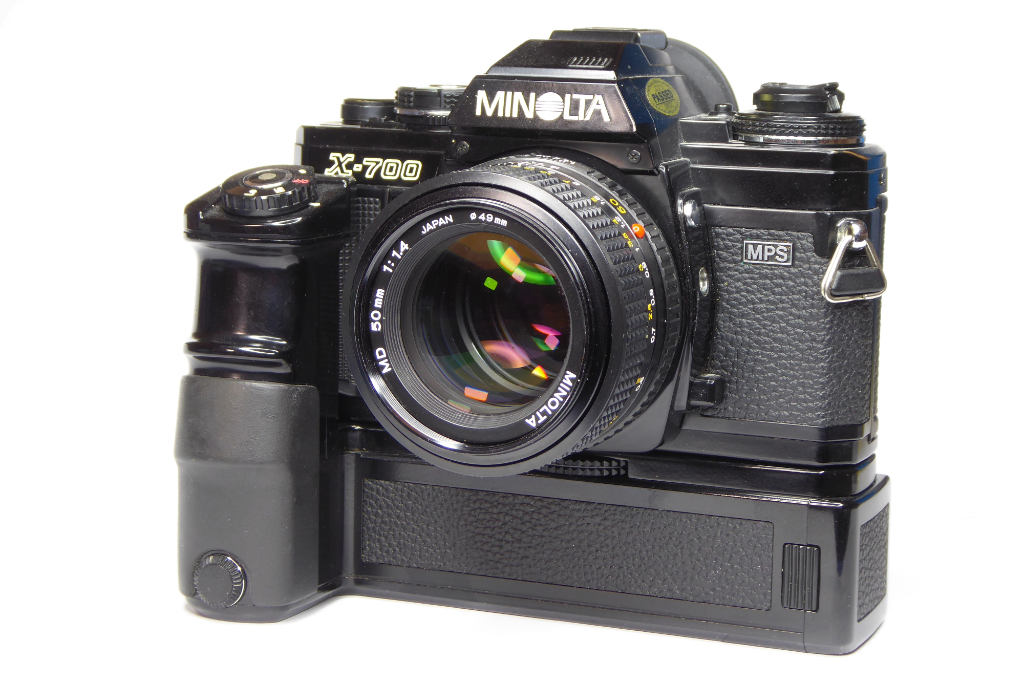
The biggest upside to the X-700 today is its ability to use almost every Minolta Rokkor lens ever made, giving you access to a huge range of glass in a relatively modern body. Admittedly some of the oldest glass won’t work so well in full Program mode and you need to be on your toes to remember to always have older lenses on their minimum aperture (largest F number) when shooting in Program (the camera wont warn you about setting the lens aperture with a non MD lens installed!) but the camera will work ok though its generally better to have the later MD lenses with it as its quite light – older lenses with their all metal constructions can make the camera feel nose heavy and awkward especially without a motor drive attached.
In Program mode I find the X-700 tends to favour speed over aperture a bit too much for my liking and mostly shoot in AP mode whenever possible. The XDs ‘secret’ program mode yields better results in my opinion. But by and large a good X-700 meters accurately and well and shoots reliably.
Minolta did provide alternate focus screens for the X-700. A cautionary tale here they are hellish to replace and best left alone unless you want to risk a scratched screen. The alternate screens which included a grid type screen are very rare indeed. On the upside if you have a damaged screen it odes at least offer the option of finding a standard screen and replacing it.
The Minolta Capacitor-itis
The X-700 does though have an Achilles heel – The cheap and nasty capacitors Minolta used late in its production. Units with a serial number below 2000000 used expensive tantalum capacitors and these tend to be very reliable. During the X-700s long production run the price of tantalum went through the roof and in the cut throat world of camera manufacturing of the 1980s Minolta swapped the expensive tantalum bead capacitors for inexpensive electrolytic capacitors to keep the price down. Electrolytic capacitors have a rather limited life and the result is many X-700s now have defective capacitors – two in fact! There’s the easy one to get at in the base of the camera (shutter release capacitor) and the hard one that’s underneath the top PCB under the cover (aperture control capacitor).
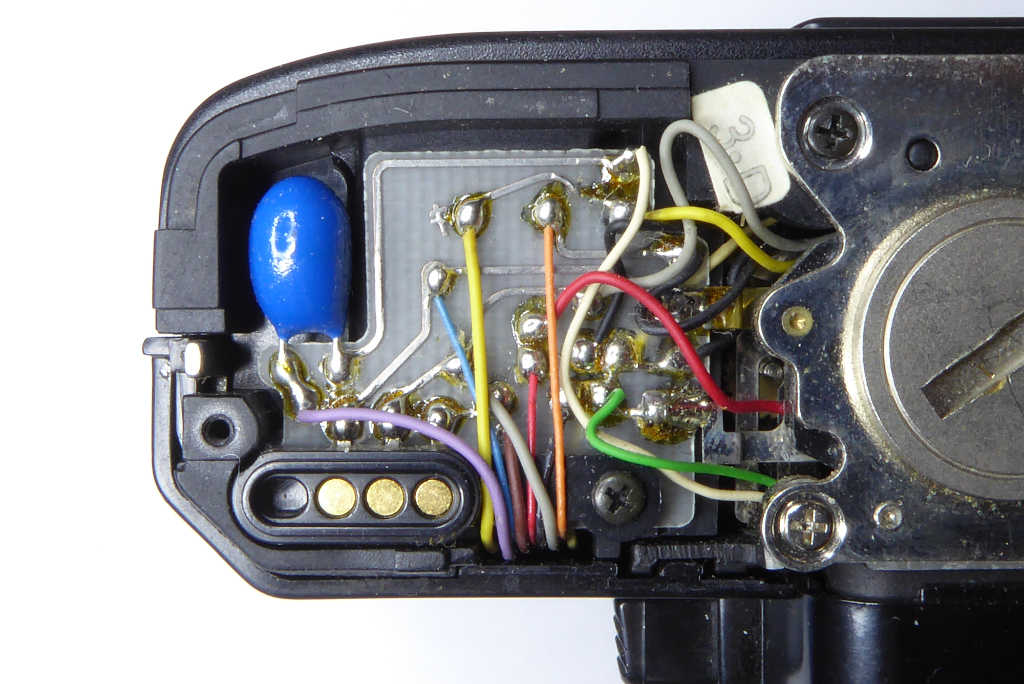
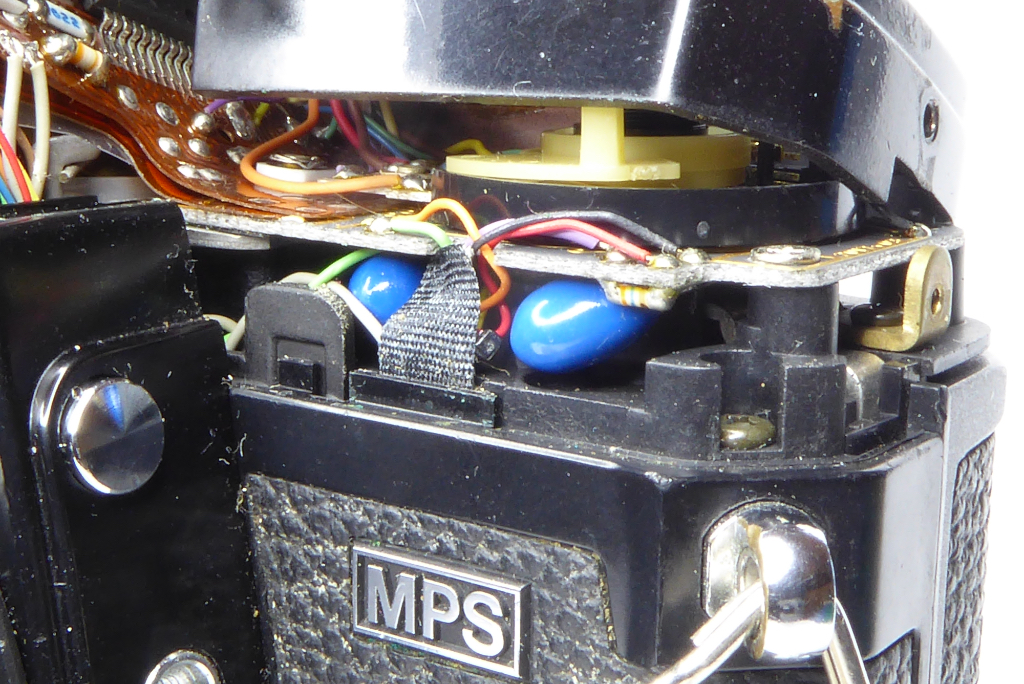
While these are not impossible to repair it needs a good low power soldering iron, patience and a steady hand. We have a Minolta X-700 Capacitor Replacement Guide here. The give away of a failing capacitor is when you press the shutter the LEDs in the viewfinder go out and the camera doesn’t fire.
Sometimes the camera will reset itself after a power off and back on again but the fault will return.
Now I said it’s the Achilles heel but the X-700 was built down to a price so they can also suffer other ills which will mimic a capacitor failure but are a good deal harder to fix. These include shutter derails and faulty electromagnets for the shutter plus of course IC or circuit board failures though these are relatively rare.
People whinge mightily about the capacitor-itis on the X series on camera forums but in truth compared to many camera issues that crop up on classic cameras its an easy-ish fix – just try fixing the issues that arise on the Pentax ME Super and you’ll quickly see that fixing a few capacitors is nothing much to moan about. From the Minolta X Series, the Minolta X-300 and Minolta X-500 also suffer from capacitor-itis.
The Unknown Factor of “X”
It’s hard to say what makes the X-700 so good – it has a very positive and smooth winder compared to most of its contemporaries, its shutter release is all electronic allowing a smooth pull off and its controls are well laid out with a good positive feel. Unlike some of its contemporaries it feels as if it was designed by people who used cameras and spent time getting its ergonomics right. Certainly its viewfinder is one of the very best thanks to the Accu-Matte focusing screen which is actually better than even the top line XD.
I always enjoy shooting my own pair of X-700s and they always deliver reliable results. It’s a camera that’s equally at home in the hands of a beginner or the more advanced photographer.

So there it is – the X-700 is a very capable, reasonable quality manual focus SLR with all the bits you need and nothing that you don’t. It uses off the shelf SR44 batteries so its easy to power (unlike some other cameras of similar vintage) and generally very reliable – doubly so if it’s an early one with tantalum capacitors or has had its ageing electrolytic capacitors replaced. The standard lens when they were in production was the late model Minolta MD 50mm f1.7 lens which is very sharp and gives excellent contrast.
The Minolta X-500 – Secret Ingredient ‘X’
In 1983 Minolta released the X-500 as a lower cost alternative to the X-700. This replaced the X-700s running mate the XG-M, the last of the XG series and until the Minolta X-500 arrived the lower cost alternative to the X-700.
The X-500 is broadly comparable to an XG-M and the X-700 but it has a few tricks up its sleeve which make it quite different for the more expert photographer. The most obvious difference on the surface when compared with the X-700 is the Program mode being deleted and no exposure compensation dial. I seldom use exposure compensation myself as I mostly shoot in manual and just tweak the aperture or speeds.
It wasn’t just about deleting stuff though. Minolta made some key changes to the Minolta X-500 probably based on experience gained with the X-700 and these form the secret ingredients for the Minolta X-500.
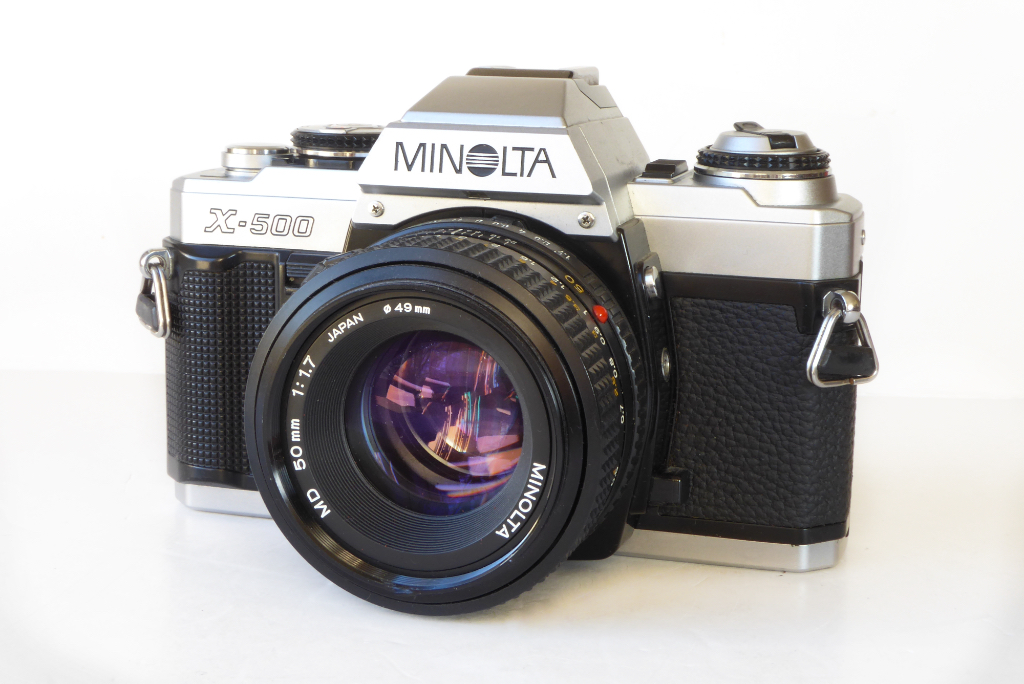
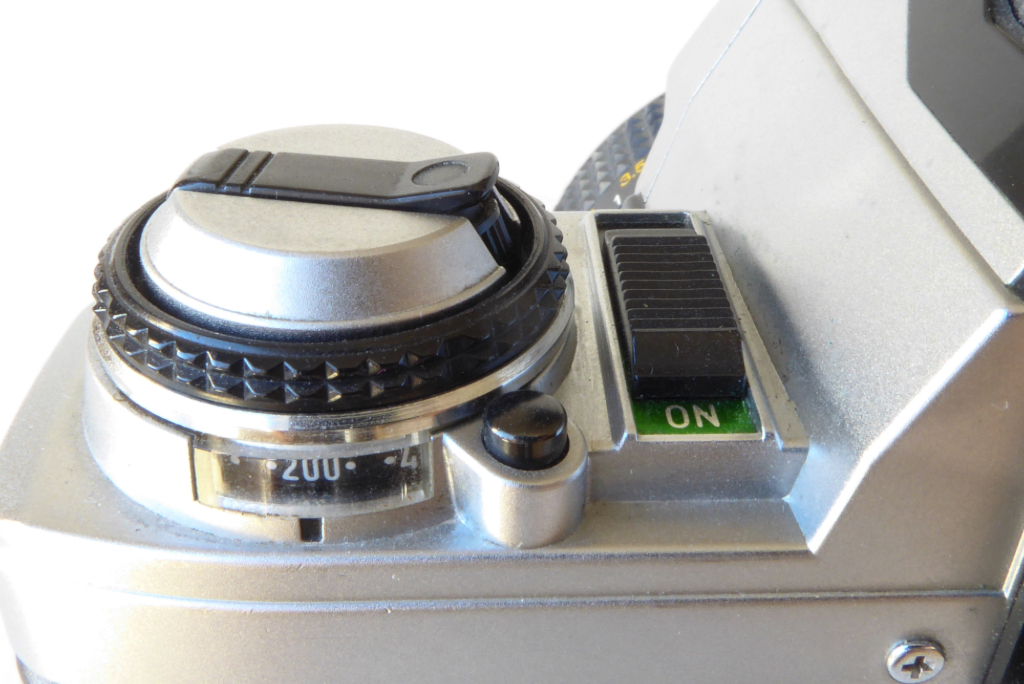
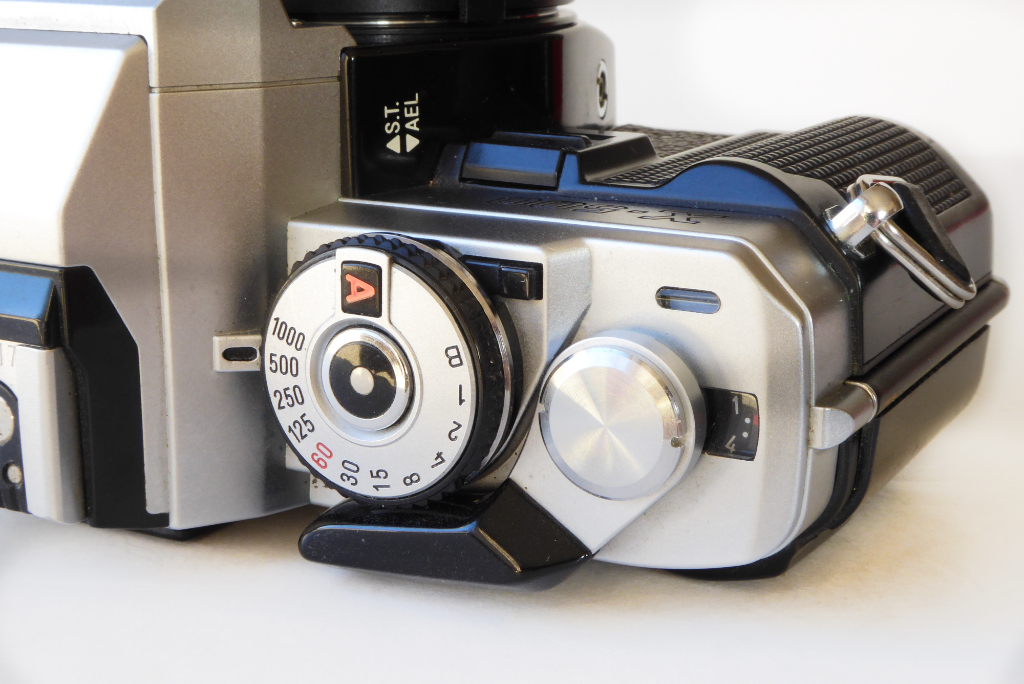
The Minolta X-500 had a more advanced meter display – the X-700 only shows the speed selected by the camera or the recommended speed if in manual mode. The Minolta X-500 shows the recommended speed and what’s actually set. I am so ancient I always look at the shutter speed dial anyway but some people prefer a bit of confirmation through the viewfinder.
There is also a minor change where the Minolta X-500 will meter accurately whether or not depth of field preview (DoF) is engaged. On an X-700 if you use the DoF preview you are stopping down the lens and reducing the light to the meter so the meter will change – the X-500 provides ‘true’ metering irrespective of whether the DoF preview is in use.
The secret ingredient ‘X’ – The biggest change which doesn’t show externally was the flash synch speed. On the X-700 if a dedicated flash is installed the camera will automatically set the shutter to 1/60th and you cant override this (there is a mod that can be carried out to the X-700 electronics but its a scary bit of work).
On the X-500 allegedly the camera can adjust the shutter speed for slow flash synch to illuminate only a background to act as a fill flash. This give you slow ‘X’ synch capability. In effect you can set the shutter speed at any speed you wish – useful for fill flash. I say allegedly because the X-570 manual says this is so and the X-570 is supposed to be identical to the X-500. Most web guides to the X-500 will also state the same BUT I can with 100% surety this is not true on any of the X-500s I have seen. They will all default to 1/60th when a TTL flash is installed.
Also added to the X-500 was an expanded ISO range of 12-3200 ASA compared to. The 25-1600 on the X-700.
Because of the fill flash capability, wider ISO range and the more informative metering many experienced photographers tended to prefer the X-500. The market didn’t agree back when it was in production and by 1985 it was withdrawn after only two years production – one of the shortest production runs of any 35mm SLR!
The fact is the X-500 was always caught between two stools – its more expensive sister the X-700 and the low cost X-300. The middle ground is always a dicey market to play in.
Like the X-700 the X-500 can accept any of the literally hundreds of Minolta Rokkor lenses and uses completely standard and readily available SR44 batteries.
On the downsides just like the X-700 the X-500 can suffer capacitor failure – unlike the X-700 it’s a lot easier to fix as there’s only one to worry about in the base. By the time the X-500 hit the production line the tantalum capacitors were gone so you will most likely only ever see these with the electrolytic capacitors.
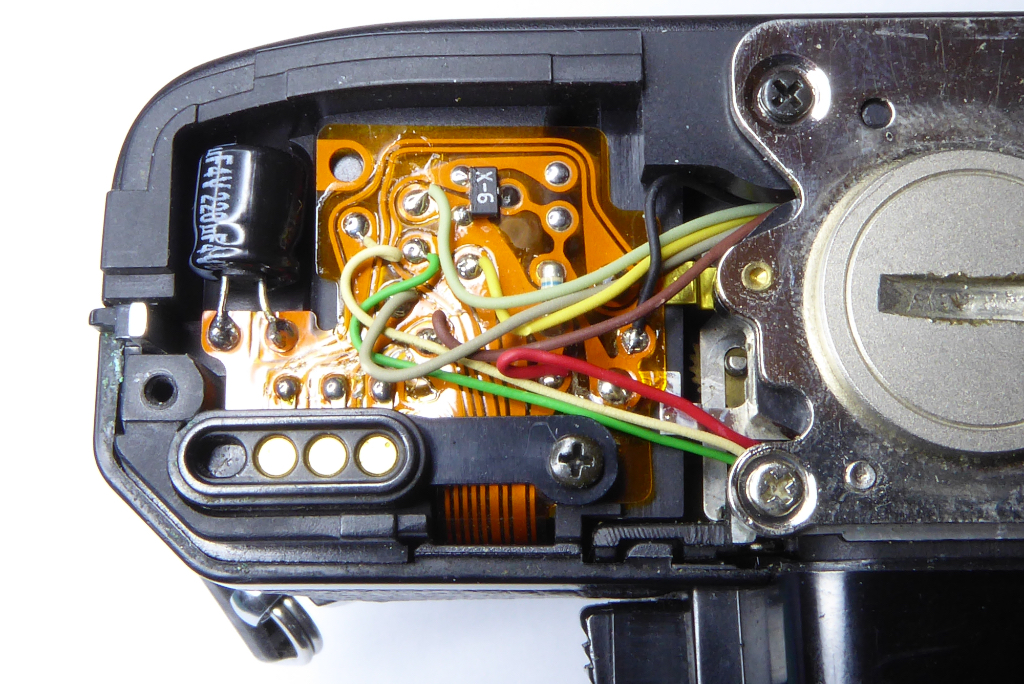
Overall all I have used the X-500 and it’s a sweet camera, for myself there’s not much to choose between it and its more popular siblings but the X-500 is harder to come by. There so few of them made by comparison to the X-700 and the X-300 (only an estimated 350,000 produced compared to approximately 2 million X-700s). In quite some time of looking I have only ever had three X-500s come into my possession. Certainly a sleeper camera because modern film shooters still tend to be smitten with the X-700 and over look the X-500. It’s still suffering middle child syndrome decades after it was made as modern film camera fans tend to overlook it – seduced by the charms of its sexier big sister.

Like the X-700 the standard lens was usually the Minolta MD 50mm f1.7 but I suspect back in its day most people would have opted for the upgrade to the MD 50mm f1.4 more befitting its advanced amateur/semi-pro status.
Unlike the X-700 which was only available in black outside of Japan the X-500 was supplied in silver as standard and black as a cost option. The black version has a ghastly plastic film advance lever rather than the metal type used on the silver model.
The Minolta X-300 – ‘X’ Marks the Spot
To add to the Minolta X Series and hoover up sales at the lower end of the market Minolta released the X-300 the same year as the X-500 in 1983 – the X-300 was around 40% less expensive than an X-700 and 20% less expensive than the X-500.
The X-300 was definitely the budget end of the Minolta X Series and Minolta slashed down the features from the X-500 to get the price low to boost sales by enticing the mums and dads.
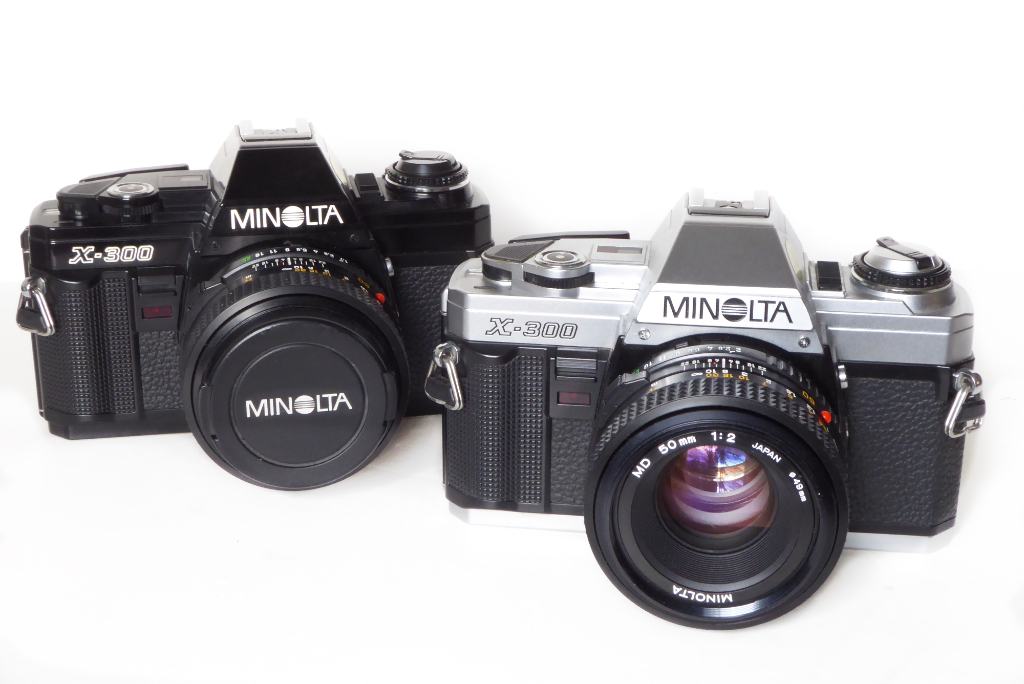
Gone from the other X series are…
- The depth of field preview – I don’t mind as I seldom use it.
- TTL flash – I can get by without.
- Aperture read out in viewfinder – I am old school and tend to look at the lens anyway.
- Slow speed warning tone – some people may think that a blessing!
- Removable back – No data-back capability – no loss. Most of them can’t date past 2000 anyway!
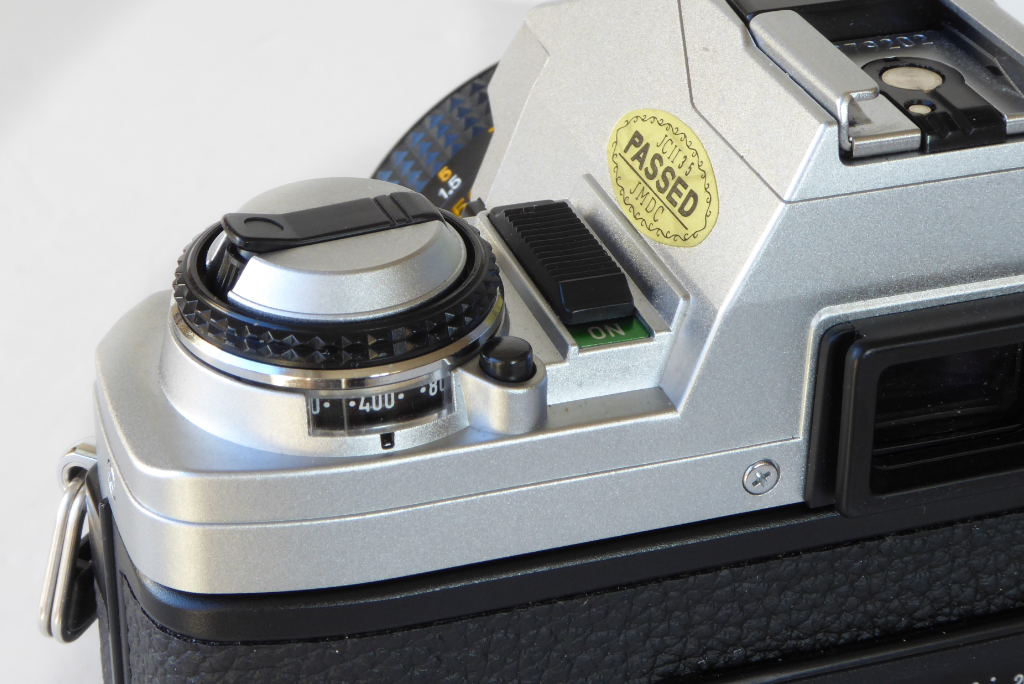
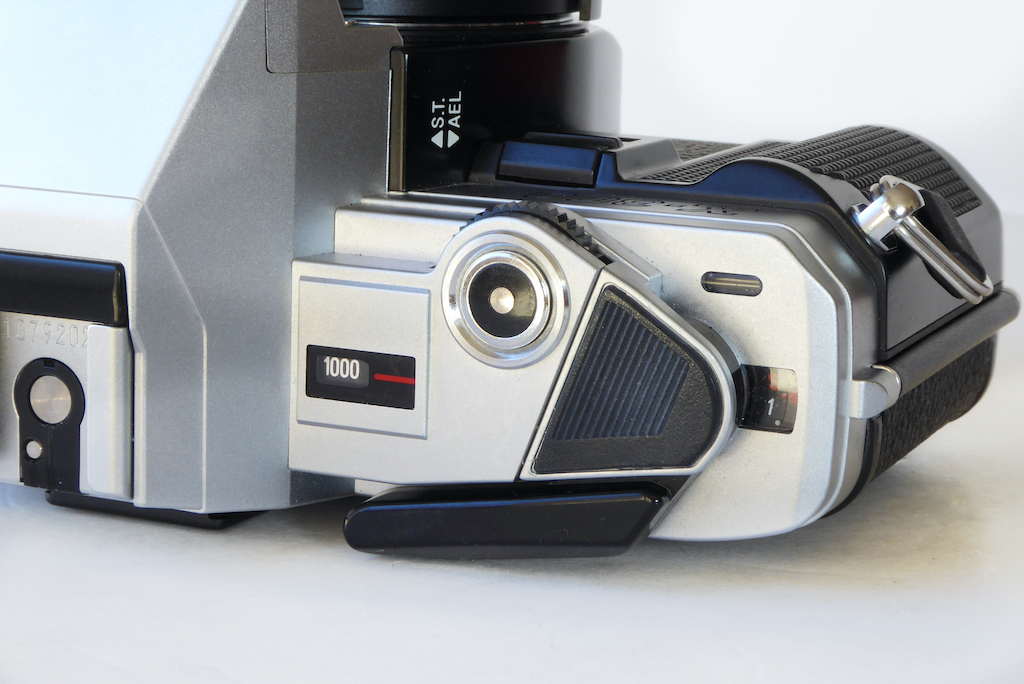
All other features are the same as the Minolta X-500 so you have a camera with AP mode and manual speeds only and a reduced top plate with simpler layout to get the costs down for an entry level camera. Back in its day they were sold as a kind of sophisticated point and shoot. Most users were going to lock the lens into its Auto Setting, put the camera on Auto and blaze away seeking a Kodak moment so it was perfectly designed for its intended customer base.
Manufactured in massive quantities (over 2 million reputedly sold in its first 10 years of production) , early models were made in Japan before production off shored to Malaysia and finally China. Late in its life the Minolta X-300 was given a makeover (more plastic) in the form of a more 1980s techno look and rebranded as the X-300S.
After Minolta ceased production in 2005 the camera was licensed to other manufacturers and often appears with Centon, Vivitar, Carena or Seagull badges. Some of these brands would be banging out Minolta X-300 / X-300S models until 2012 making it a contender for the longest production run of ANY 35mm SLR camera far outpacing it’s more illustrious ancestors and arguably holds the title of last manual focus camera in production.
All this chopping down of features may sound rather grim but in fact the Minolta X-300 is actually quite nice to shoot with. It retains all of the essential features of the other X series cameras. It can make use of a vast range of lenses and accessories like its more expensive sisters and even though later ones clearly started hacking into the quality (especially the third party ones like Centon) they can perform extremely well with quality lenses. The standard camera shipped with the Minolta 50mm f2 which is a very sharp lens. Most that I have come across have had a 50mm f1.7 which is clearly the original lens which may indicate it was up-sold by the dealer when new. When new the standard finish was silver with black as a cost option.
Like the other X series the Minolta X-300 can suffer a blown capacitor as they were all made with electrolytic type capacitors. The headache with the Minolta X-300 is although there is only the one capacitor in the base its soldered on to a very fragile and heat sensitive flex board. It needs a very low powered soldering iron and a very deft touch or else the flex board is toasted and that’s the end of the camera.
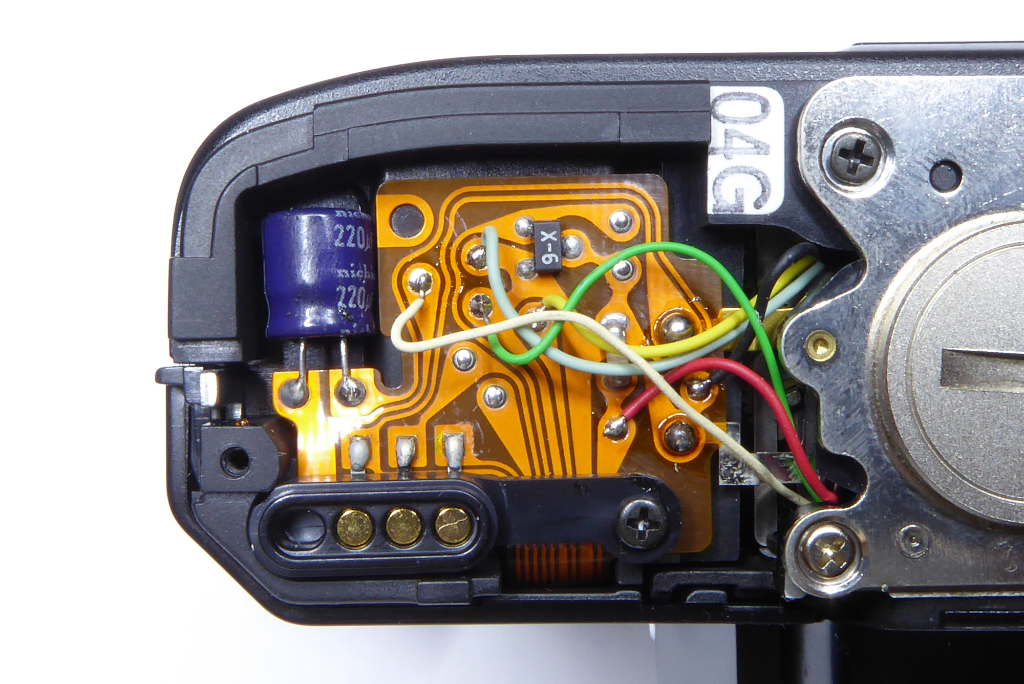

I have to confess when I shot the first Minolta X-300 to a sneaking snobbism towards it – it’s such a beginner level camera and I am such a consummate professional (yadda yadda) BUT I have shot quite a few of them and they have definitely grown on me. They are rather sweet and fuss free. I would put these down as ‘buried treasure’ – overlooked by most because of its ‘poor boy’ status but it’s a camera which can play way out of its league. That shouldn’t be surprising as its guts are basically an X-700 minus the frills.

Overall a nice camera to shoot with – it lacks features I would prefer to have but I could easily live with it if it were the only camera I owned. My only gripe with it is I hate the shutter speed control which feels fiddly and I don’t like the fact it has no stops at either end. It just rotates all the way round endlessly so its tough to judge by clicks as to whats going on which paired with the rather tiny markings for speed makes its a bit of a chore with my aged eyes.
As ever the real magic is in the lens rather than the camera and as the humble X-300 can make use of all of the superb glass made by Minolta it really is one of the last bargains left on the shelf and something of a buried treasure – ‘X’ really does mark the spot for these.
Minolta X Series Accessories
Minolta created a whole range of accessories for the Minolta X Series and of course almost any Minolta SR/MC/MD lens will fit and work with the camera.
My own picks for accessories would be a bit more limited.
Minolta bought out three flash guns to integrate with the X-700s TTL flash. Of these easily the best is the 360-PX. It’s simply superb with bounce flash capability and every feature you could possible expect from a flash gun. It’s also very powerful.
On the downside its huge, and when loaded with batteries very heavy. I normally use a separate flash grip for it for fear of it snapping the hot shoe off the camera!
The Motor Drive 1 is a useful accessory as it provides an additional shutter release button for portrait/vertical shots but unlike some motor drives you do need it powered to be able to use the release buttons on the motor drive. Some drives will allow you to trip the shutter even with no batteries installed in the drive. It does though make the camera more grippy which is useful with longer lenses or when a flash is being used.
A word of caution. The X series used very many plastic drive gears inside and motor drives can place a great strain on the cameras internals so it usually best to avoid drives on older cameras.
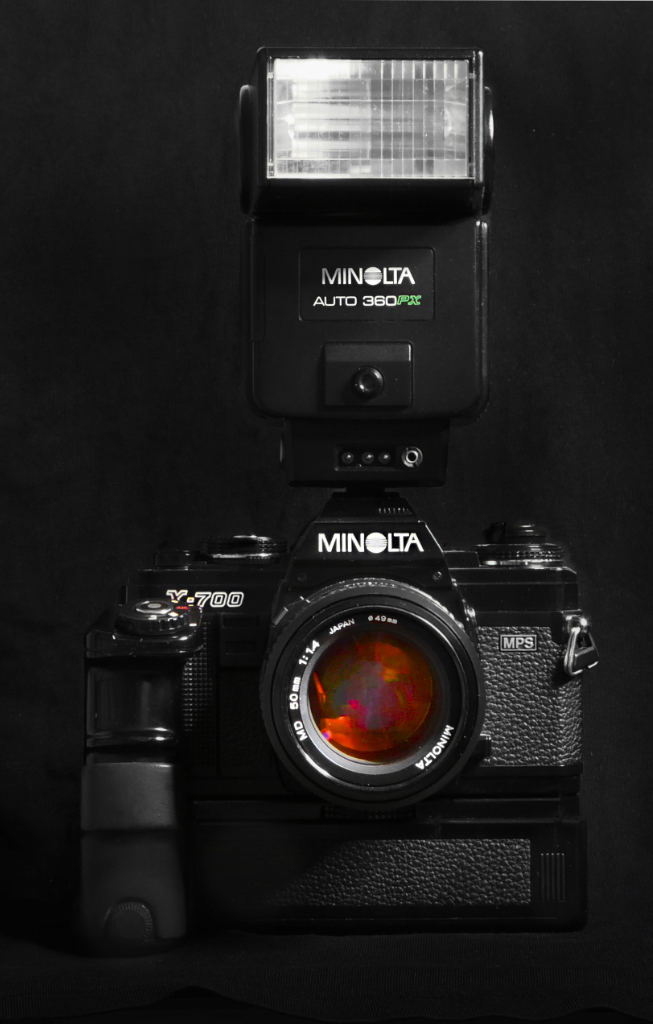
Summing up
If there was ever a secret formula to success with selling cameras then Minolta certainly hit it with the Minolta X Series with literally millions produced and sold (Probably close to 6 million from Minolta alone!).
Minolta had pioneered many developments in film cameras and it seems fitting their last manual focus camera would be one of the last manual focus camera of any manufacturers to be in production.
The X-x00 Series may well have been placeholders while Minolta got on with the real work of producing the first commercially successful auto focus system but the X series stayed in production a very long time and were amongst the last film cameras still being turned out. Many of these are still going strong with a whole new generation of film users which just goes to show if ever there was a magic formula, a secret ingredient ‘X’, Minolta may well have found it with the X-700, X-500 and the X-300.
Further Reading
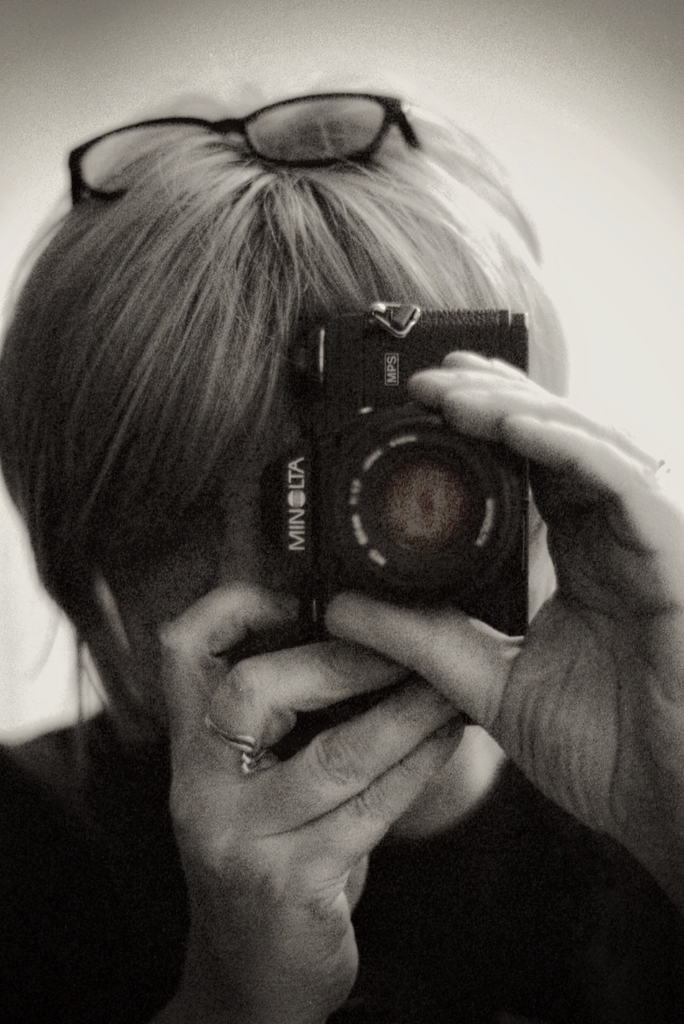
Mel is one of the driving forces behind High 5 Cameras and writes all our articles.
Starting serious photography back in 1972. Over the years she got to shoot film with most of the major brands in 35mm and large format as both a studio photographer and content provider for websites in the early life of the web. These days she is rediscovering photography and has become the GOTO person for knowledge on camera repair advice.


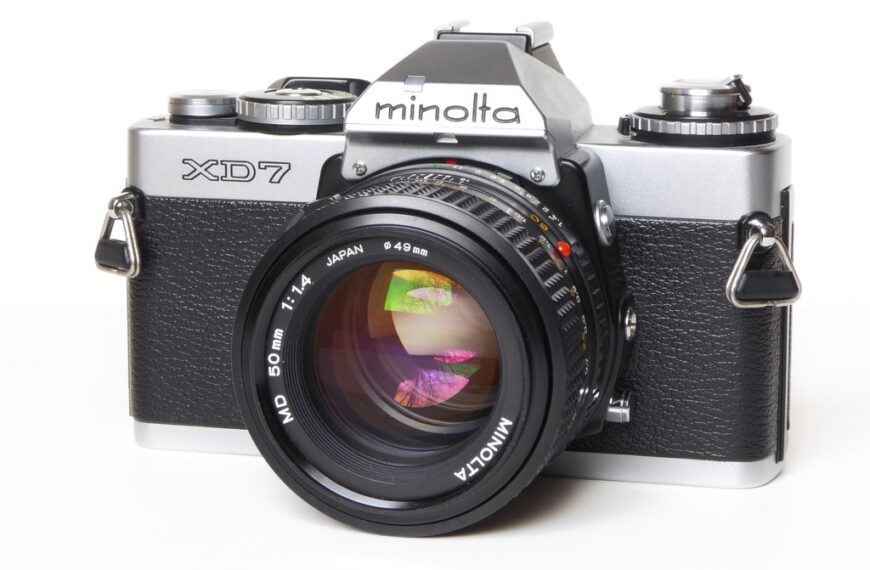
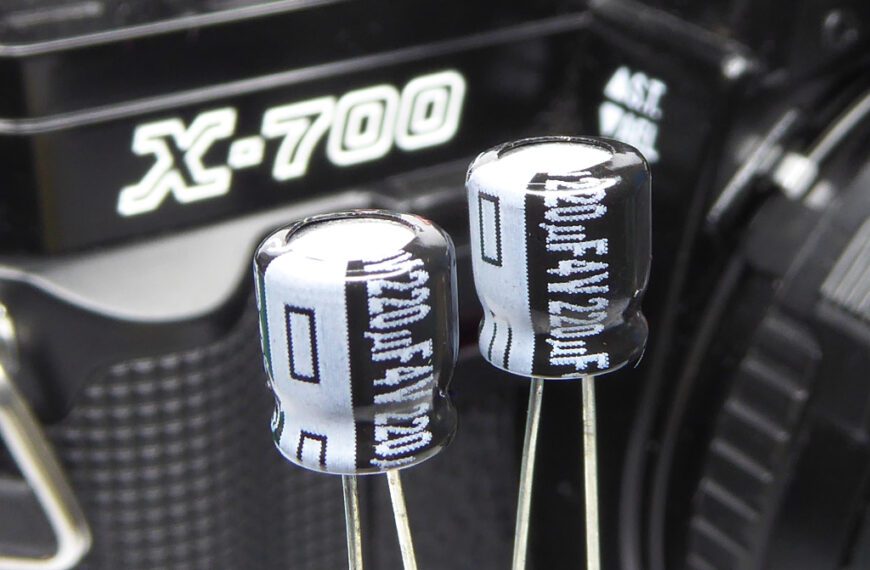
Wonderfull article!!! Very thorough. I have only one thing to add, if I may. Minolta has always, I think, been very mindful of ergonomics. The little grippy “bumps” make the X700 very easy to carry and hold, compared to the XD’s. And on the X700, the on-off switch is better placed compared to on the X500 and X300. I have had plenty of occasions when I realizes the camera was off, when I had finally composed, and tried to release the shutter. The switch is right there, well within reach of my index finger.
P.S. What is a “low powered” soldering iron? How many Watt?
Thanks!
Hi and thanks for your comments. Yo are quite right Minolta always had excellent ergonomics and their cameras always feel like they were designed by people who were actual photographers. Personally I prefer the XDs ergonomics (watch out for an article on the XD coming soon!) but in matters of taste there is no dispute. Like you I find the on/off switch on the X-300 and the X-500 a bit of pain. Given that all of the X series have a touch sensitive switch on the shutter release I often wonder why Minolta bothered putting a power switch on any of the cameras. Possibly they were concerned about power drain even when the camera was off. As you know the XD has no master power and relies entirely on its shutter release to activate the power and metering and that has always seemed the most sensible arrangement to me.
Low powered irons? – I prefer Antex 12W and 18W irons. I have always preferred Antex irons and have found them very reliable. My 12W one is over 35 years old and still does excellent service – the tip only failed about 2 years ago so I think I had good value.
I stated low power as you can see from the X-300 bodged repair that someone was using some horrifically powered iron which was probably more at home soldering car electrics.
Fascinating analysis of the X series history, and pros & cons. But aaargh The Minolta Capasitor-itis grates on my ex-electronics engineer’s nerves. albeit spelled correctly in the body of the text!!
Ahhh well I will blame my web person for that. Oddly I spotted it late last night – you’ll see its been corrected now 🙂 I also made a few small mods to the text in the X-500. Mel.
[…] post, we took many good pictures with our Nikon Z6II and Z24-120 f/4 S, Nikon Z30 and Z40 f/2 and a Minolta X-500 with MD Rokkor 50mm […]
Lovely well informed article, I have an XG-M and X300 in my collection, I was just about to list them on ebay with other item to fund a leica lens, however seeing as they are only making £20 to £30 inc lens ive decided to keep them
The X-300 and XG-M are tragically undervalued. Form a repair perspective we alsmost never do X-300s as a repair. They are as much work as an X-700 and command so much less that its uneconomic to devote much work to them. It’s rather sad as it’s a very good camera and of course able to make use of almost every Minolta lens ever made. The XG-m is a very sweet camera to shoot. Mel actually prefer them to the X-700 but they are swinish when things go wrong with them and can take literally hours to debug and fix even relatively simple faults. We did sell a few of them that had been repaired by Mel but she wont take on another one after the last one consumed so much time.
It’s a shame they are not vlued more highly as they are a very solid camera when working.
My X500 was carried around by me through much of Africa and Europe with me back in the 80s until it was nicked in Mafikeng at the time of the ’93 riots. Great film camera! By coincidence I passed by the Hawker Hunter you use as an example just yesterday, whilst walking my dogs in Charlwood near Gatwick.
Hi, The Hunter is very sad to see. It’s been there decaying for quite some time and I gather the museum is waiting to dispose of it. It’s quite a nice museum – small but interesting. They have a Lightning in there which was, believe it or not earmarked for Mel. She was in the process of buying it when she got divorced and with the house up for sale there was nowhere to put it so she had to bail out (pardon the pun) from buying it.
Mel took that shot of the Hunter and it really just goes to show how good even a budget camera can be if you knw what your doing as she is a very good photographer. Our favourite is probably the XD with the X-700 a close up runner. I prefer the X-300 for its auto TTL flash mode.
[…] I desperately wanted to try double exposure photography on film for the first time. I used a Minolta X-500, MD Rokkor 35-70 f/3.5 and a roll of Kodak T-Max 100, which I shot twice (I shot the whole roll of […]